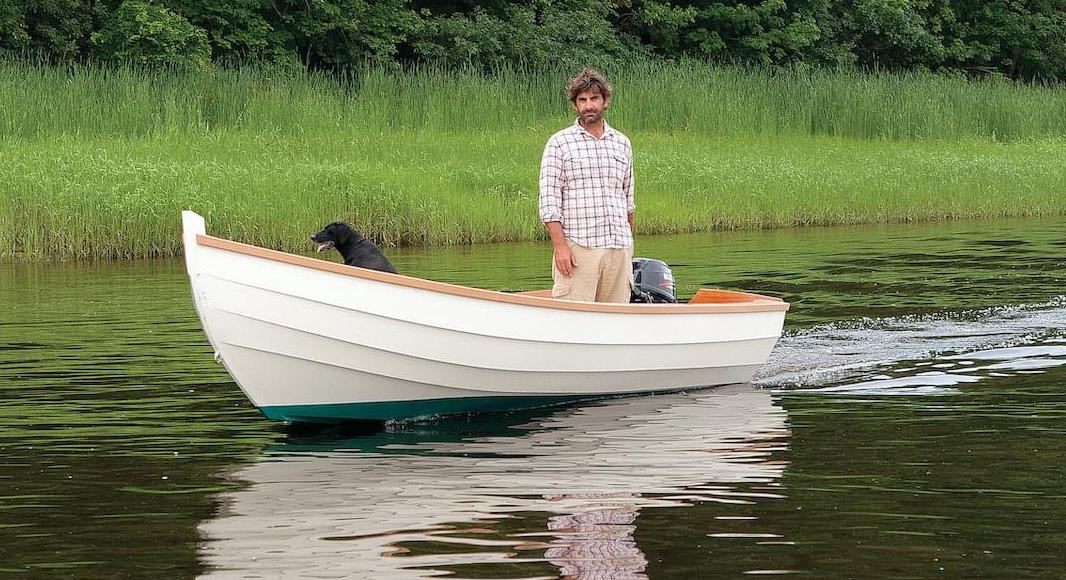
The Amesbury Skiff is a classic outboard powered workboat derived from the dories of the Massachusetts North Shore. It is also an ideal recreational boat—great for exploring, fishing, and family outings.
Planking
The first plank, as with almost any flat-bottomed boat, is the garboard. These planks are wide, requiring 18" stock. If they were to be cut from a single straight plank of pine or cedar, there would be considerable grain runout, and the planks would most certainly split. For that reason, Amesbury Skiff garboards have always been made from 1⁄2" marine plywood.
It just so happens that two lengths of 8'-long plywood joined with a 10:1 feather scarf provide the builder with just enough length for a garboard. The garboards, when laid out flat on round-sided dories and skiffs such as this, typically resemble a pronounced frown; the shape of the bottom and angle at which the garboard meets the bottom determine the amount of this frown.
The shapes of these planks are determined by a process called spiling, and spiling planks on dories is right out of the Spiling for Dummies book. On Lowell boats, the shape of a plank is defined by two factors. The first is a series of “lining measurements,” which are plank widths measured vertically up from the boat’s bottom at the base of the stem, the midpoint, and the base of the transom. These dimensions are given on the plans.
